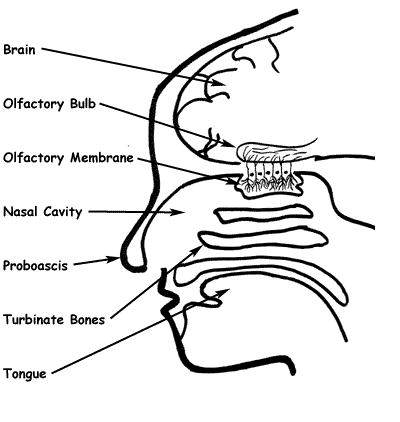How do you Smell?

| The picture on the left is a magnification of part of the olfactory membrane. The bright blue shapes are the receptor cells. The finger-like projections you see on them are the cilia we were talking about above. | |
|
The picture on the right is a magnified view of the cilia. The chemoreceptors are represented by the notches or holes on the cilia. The odor molecules are the colorful shapes floating around among to the cilia. Scientists think that the shape and size of the odor molecule allow it to interact with only a few receptors. Our brain can tell which receptors detect molecules and so can tell what the smell is. |
Smell and your brain. |
|
"Smells are surer than sights or sounds to make your heartstrings crack." - Rudyard Kipling |
|
All information and programs subject to change without
notice.